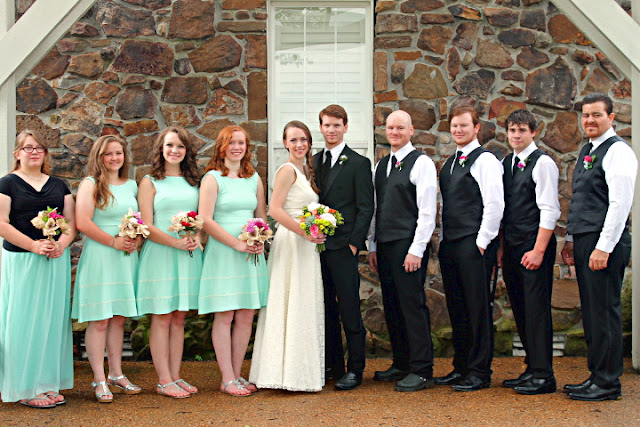(This was originally presented in January 2017 at the
American Farm Bureau Federation Annual Convention and IDEAg Trade Show in Phoenix, AZ.)
As part of the requirements for an honors group I am in, I have been conducting a two-year research study on the benefits
that urban, at-risk middle school students could receive from a basic
introductory course in Agriculture. I chose this project topic due to experiences I had while a
volunteer zookeeper at a local Zoo in the “Petting Farm” area – members of
the public – both affluent and poor - were always astonished when they found
out what a chicken or a cow looked like in real life.
People would come running
up to me screaming, “What is THAT?!” And I would have the opportunity to
explain to them that, "THAT" was a cow.
 |
| An Angus-cross |
Or other times, someone would ask me, “Is that
where my KFC comes from?” and I would get to explain that while their KFC didn’t come
from bantam silkie chickens, they were on the right track.
 |
| A bantam silkie chicken |
 |
| A Sanderson Farms truck hauling meat chickens heads down the highway, bringing fresh meat to you! |
I realized at
that time what an impact an education in Agriculture could have on my community
and I decided I would do my part to make that education available to community
members.
Defining Terms
Before I go any further, I am going to define At-Risk and
Urban, because these terms can be ambiguous or have different meanings,
depending on their context.
- “At-Risk” is defined as a
student who is likely to fail at school; usually by dropping out. (National
Center for Urban Education Statistics)
- “Urban” is typically large cities
or areas with characteristics such as an increasing population of English
language Learners or relatively high poverty rates. Urban can be further broken
down into three categories:
- Urban intensive: Cities >1 million people
- Urban Emergent: Cities <1 million people, but are still very large
- Urban Characteristic: Cities that are medium-large and share characteristics of
the other two (Milner, “But What Is Urban Education”)
Why It Matters to You
Clearly this project matters to me, as I have spent two
years of my life working on it, but why should it matter to you? The number one
most important reason is that a wave of uninformed members of the public are
dictating what happens at the production level of Agriculture. In short, your
jobs are being run by consumers who don’t know anything about what you do. Who
think that steak comes wrapped in cellophane and who have never seen a field,
much less a worm, in their life. Yet we cannot look down on these people
because they aren’t stupid – not at all – they are simply the product of an
educational system that has chosen to focus on other things and has left
Agriculture behind.
 |
| A Cheviot eweling that will be shown later in her life |
Why It Matters to Them
Agriculture education matters to me, and it matter to you,
but why should it matter to at-risk students living in inner cities? Because an
education in Agriculture provides students with new opportunities for careers
that they don’t even know exist.
It gives them the opportunity to learn skills that they
could live off of or use as a hobby. A class in veterinary science that
includes even small animals like a guinea pig gives students who are bullies
and jerks the chance to learn empathy, compassion, and patience – skills that
cannot be taught in almost any other setting.
It gives them the knowledge to make better consumer
decisions in the grocery store and knowledge on how to respond when they see an
inflammatory article online about the dangers of GMOs and antibiotics in their
food.
And it gives them the chance to change the way that society
at large views agriculture.
High school is setting the stage for students’ careers and
collegiate decisions, and middle school sets the stage for high school.
Currently, many of our nations’ students are entering high school with
little-to-no background information on agriculture. We cannot expect those
students to take Agriscience classes – should they even be offered – if they
don’t even understand what agriculture is.
What Educators Said
In my research, I conducted a survey of middle school
teachers in large cities throughout Tennessee and North Mississippi. The
responses I got were very supportive of seeing Agriculture incorporated into
their programs. Some of the responses I got were:
·
“It would give them structure and would be
better for students that are active during the school year with extracurricular
activities.”
·
“It would allow them to gain survival skills as
well as learn how to lead a healthy lifestyle.”
·
“If disadvantaged students studied agriculture
and linked it to other disciplines, they have the potential to learn not only
healthier eating habits, but also how it fits into the greater economy. They
could learn skills from raising livestock and crops to preparation, marketing
and more - just within the food industry. And by tying it into technology,
math, and engineering, they may find inroads to fields that they otherwise
might not consider.”
Reaching Students
To reach our urban students, we have to be able to show them
that the knowledge they gain from Agriculture classes will benefit their future
and their present lives. We have to start recruiting in middle schools if we
expect our students to be interested in high school. And we absolutely must
have a presence in their community.
Community support is one of the number one reasons that a
student may succeed. The community support will influence family support, and
this is critical. We have to convince urban families that we are worthy of
their child’s interest – careers in Agriculture just aren’t viewed as highly as
sports or music careers in a lot of urban communities.
 |
| A crop of soybeans, ready for harvest |
Retaining Students
To retain these students, we must ensure that students who
are low-achieving are receiving equally as much attention as high-achieving
ones. Simply because a student does not excel academically doesn’t mean that
they aren’t going to be brilliant in a hands-on career.
We must also push for culturally inclusive programs. The
majority of inner city students don’t look like me, and many of them don’t
speak my language as their primary one. We have to have a program that takes
note of this and includes them. Far too often we see programs that say
something along the lines of, “And the pilgrim settlers began to plow (Oh yeah, and the
Native Americans showed them that if they planted fish with their corn it would grow
better) but the pilgrims did all this work and were able to cultivate the land.” While that is totally true, and very important for our students to knwo, that course of learning has the
tendency to make White People the focus of it, totally discrediting the
thousands of years of agricultural production that was done by millions of
people that weren’t white. Some of the most historically advanced irrigation
systems have been unearthed as relics in the Andes mountains. Israel currently
leads the world in many Agricultural technologies. We have to make sure that
students of every race and background understand that their culture has had a
hand in getting Agriculture where it is today, and that they can continue that
legacy.
And again, we must create a community focus. The more
involved that we as an agricultural community become in primary education, the
more we have a chance to shape and influence it and thus change societal perceptions
of Agriculture.
How to Get Involved
How can we accomplish these goals of reaching and retaining
students?
We can volunteer with local organizations and clubs already
in existence. Our physical presence can be life changing for these students. If
you don’t know what currently exists in your community, contact your Extension
Agents and see if
Master Gardeners,
4-H, or
FFA is partnering with inner-city
schools in any way. If you are a 4-H or FFA leader, consider having your
members practice their speeches and reasons at middle schools.
 |
| A Collegiate 4-H student giving back to her local 4-H club |
We can also talk to our local schools to find out what
programs are already being offered to students by the school and then become
active with those programs.
Time is a precious commodity, so if you are pressed for it,
consider donating materials to school programs. If the school has a garden,
perhaps you can donate top soil, or seeds, or a few shovels or rakes. These
donations can be tax deductible, depending on which organization you give to.
Kids love field trips, and seeing a farm in working action
can be highly influential to them. You may be able to have students out while
planting or harvesting and let them simply stand on the side of your field and
watch – I’ve had the opportunity to do this in my college classes, and if a 21
year old city-slicker can get excited from watching a combine drive past, image
how excited a 12 or 13 year old would be.
Now, if bringing people to your farm makes you
uncomfortable, is a biohazard, or just doesn’t work, consider taking the field
trip to the students. I can’t tell you how excited a class of kids would be if
you pulled up to their school with a cow in a trailer. Or if a biology class is
talking about plant systems, bring in a few corn plants, or soybean, or cotton,
or wheat. Whatever you’ve got is something that they don’t, and they want to
learn about it.
 |
| A Case combine harvesting a test plot of corn |
A Call to Action
This was only a few ideas to get you started, but there are
many more out there. I encourage each of you create your own list for getting
involved in a school’s community.
I want to
encourage you – we are living in a time period when Agriculture is needed more
than ever, yet is overlooked, unappreciated, and insulted on a daily basis.
We
cannot change people’s mindsets by being angry.
Instead, we can provide the
knowledge that is lacking and do it with kindness. We have the chance to mold
society through our Nation’s youth, and I strongly encourage you to get out
there and do so for the sake of Agriculture.
"You know, farming looks mighty easy when your plow is a pencil, and you're a thousand miles from the corn field." - Dwight Eisenhower Address at Bradley University, Peoria, Illinois, 9/25/56























































